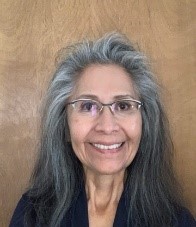For more than 40 years, the American Cancer Society has designated the third Thursday of November as an opportunity for people who smoke to quit or make a plan to quit. In observance of the Great American Smokeout, the Indian Health Service is providing prevention activities to encourage commercial tobacco users to make plans to quit, to learn about the harms of tobacco use and exposure to secondhand smoke, and to participate in alternative wellness activities.
Why is it hard for tobacco users to quit?
The nicotine in tobacco is an addictive substance that makes it very difficult for people who want to quit smoking. Using any tobacco products that contain nicotine, such as cigarettes, smokeless tobacco, e-cigarettes, and hookahs, can lead to nicotine addiction. When a person inhales cigarette smoke, the nicotine in the smoke is rapidly absorbed into the blood and starts affecting the brain within 8 seconds. Smokers may experience feelings of pleasure and an increased concentration that only lasts for a few minutes. When tobacco users attempt to quit, they may experience unpleasant withdrawal symptoms such as irritability, agitation, fatigue, headaches, insomnia, and an inability to concentrate. These unpleasant sensations make it difficult for smokers to quit.
How can we help smokers?
Many tobacco users would like to quit and may have tried several times to quit. Studies indicate that using Nicotine Replacement Therapy cessation aids such as nicotine gum, nicotine patches, nicotine nasal spray, nicotine inhalers, and nicotine lozenges can increase a person’s smoking cessation success, especially with counseling support. It is important to promote and provide cessation services to smokers who are ready to quit. If local cessation services are not available, refer to 1-800-QUIT-NOW or the Smokefree.gov text messaging program.
Why should we be concerned about tobacco use?
We respect the sacred and traditional use of tobacco among tribal communities. For centuries, some tribes have used traditional tobacco for ceremonies, prayers, and medical purposes. In our efforts, we are addressing commercial tobacco use and exposure to secondhand smoke. The use of tobacco increases the risk of heart disease, cancer, and diabetes. Cigarette smoking continues to remain high among American Indian and Alaska Native adults, at 33.9% compared to 14.0% among U.S. adults. According to the Centers for Disease Control and Prevention , 26% of American Indian and Alaska Native women reported smoking during their last three months of pregnancy, compared to 14.3% of whites, 0.9% of African Americans, 3.4% of Hispanics, and 2.1% of Asians and Pacific Islanders.
What resources and strategies are available to address tobacco use and exposure to secondhand smoke?
- Access tobacco prevention posters
- Access the Basic Tobacco Intervention Skills certification training from the IHS
- Access archived tobacco prevention webinars
- Contact IHS Area Health Promotion and Disease Prevention Coordinators to learn how you can support tobacco prevention efforts
- Access additional tobacco prevention campaigns, infographics, fact sheets, and digital stories of former tobacco users at the HP/DP website, available early next year
Additional resources on e-cigarettes:
- View the CDC archived webinar on “Outbreak of Lung Injury Associated with E-cigarette Product Use or Vaping: Information for Clinicians. ”
- Patients who currently use e-cigarettes and vape products should be advised to refrain from use. More information is available at CDC’s What You Need to Know
- Access and share the CDC information sheet on “E-cigarettes and Youth: What Parents Need to Know.”
- Share a free online tobacco prevention toolkit aimed to prevent junior high and high school students from using commercial tobacco products
- Please check the CDC Smoking & Tobacco Use site for the most up to date public information.
Check with your IHS HP/DP Coordinators about Great American Smokeout events at your sites.
Related content:



